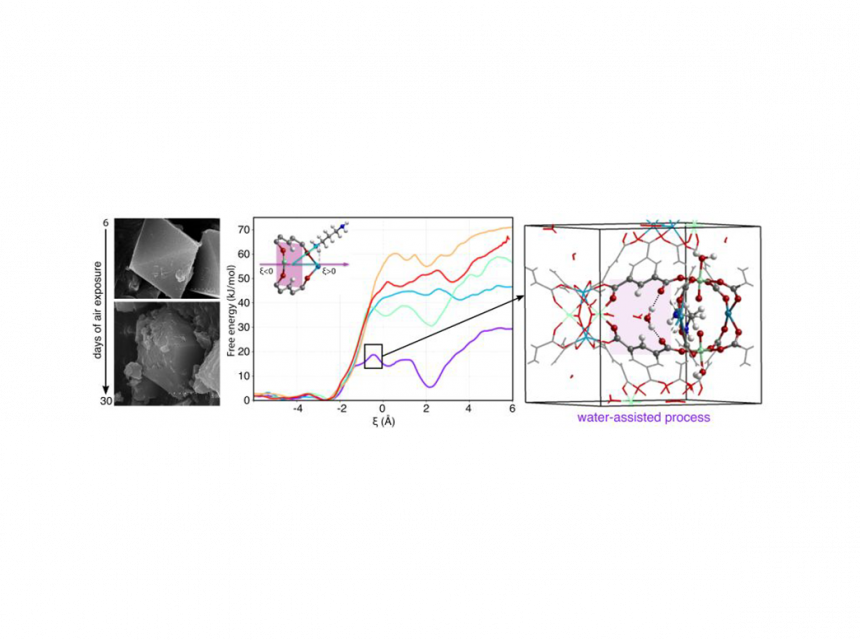Carlos Martí (ICMol) —Enhancing the water stability of Titanium Organic Frameworks with grafted amines for CO2 Capture
Don't miss any Success Story following us on X and LinkedIn!
@RES_HPC RES - Red Española de Supercomputación @res-icts.bsky.social
Check this Success Story at our LinkedIn: Enhancing the water stability of Titanium Organic Frameworks with grafted amines for CO2 Capture
💧💡A RES Success Story aimed to improve the water stability of amine-appended MOFs💡💧
📋 “Enhancing the water stability of Titanium Organic Frameworks with grafted amines for CO2 Capture” by Carlos Martí-Gastaldo's from Instituto de Ciencia Molecular- ICMol/Universitat de València
Directly capturing CO₂ from air is rapidly advancing, particularly developing new amine-appended metal-organic frameworks (MOFs). Previous studies revealed an alternative grafting mode of amines in the MUV-10 material and clarified the underlying mechanism. However, the stability of the final material under air and up to 60% humidity depends on the amine size.
🖥️ Thanks to RES supercomputer #MareNostrum5 from Barcelona Supercomputing Center, the team conducted simulations to investigate the experimental differences in the stability of MUV-10–amine materials. The results helped to guide the design of new amine-appended MOFs with improved stability and increased CO₂ affinity.
The diffusion of amines through the cages and cavities of MUV-10 involves the temporary breaking of two Ca–O bonds to widen the crossing ring. After the amine has passed through, these bonds are restored. The team's umbrella sampling simulations suggest that water molecules significantly stabilize the transition state of the process by forming hydrogen bonds with both the oxygen atoms of the linker and the amine groups of the alkylamine.
For large amines, the combination of high adsorption energies and increased diffusion barriers helps to trap them effectively. This controlled diffusion allows the passing ring to properly reconfigure without disrupting the material’s crystallinity. In contrast, increasing the diffusion of small-chain amines shows that water may play a crucial role in triggering an irreversible structural collapse.
📸 The image shows MUV-10-DAP crystals (left) viewed with scanning electron microscopy after 6 and 30 days of air exposure. Free energy profiles for the diffusion of the amine with different conditions (middle), snapshot of the transition state stabilized by the presence of the water (right).


